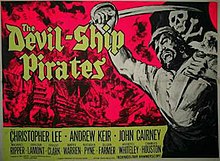
Sir Christopher Frank Carandini Lee was an English actor and singer. In a long career which spanned over 60 years, Lee often portrayed villains, and appeared as Count Dracula in seven Hammer Horror films. His other film roles include Francisco Scaramanga in the James Bond film The Man with the Golden Gun (1974), Count Dooku in several Star Wars films (2002–2008), and Saruman in both the Lord of the Rings film trilogy (2001–2003) and the Hobbit film trilogy (2012–2014).
Hammer Film Productions Ltd. is a British film production company based in London. Founded in 1934, the company is best known for a series of Gothic horror and fantasy films made from the mid-1950s until the 1970s. Many of these involve classic horror characters such as Baron Victor Frankenstein, Count Dracula, and the Mummy, which Hammer reintroduced to audiences by filming them in vivid colour for the first time. Hammer also produced science fiction, thrillers, film noir and comedies, as well as, in later years, television series.

Dracula is a 1958 British gothic horror film directed by Terence Fisher and written by Jimmy Sangster based on Bram Stoker's 1897 novel of the same name. The first in the series of Hammer Horror films starring Christopher Lee as Count Dracula, the film also features Peter Cushing as Doctor Van Helsing, along with Michael Gough, Melissa Stribling, Carol Marsh, and John Van Eyssen. In the United States, the film was retitled Horror of Dracula to avoid confusion with the U.S. original by Universal Pictures, 1931's Dracula.

Quatermass and the Pit is a 1967 British science fiction horror film from Hammer Film Productions. It is a sequel to the earlier Hammer films The Quatermass Xperiment and Quatermass 2. Like its predecessors, it is based on a BBC Television serial, in this case Quatermass and the Pit, written by Nigel Kneale. The storyline, largely faithful to the original television production, centres on the discovery of ancient human remains buried at the site of an extension to the London Underground called Hobbs End. Ancient prehuman remains appear, then even more shocking discoveries, leading to the involvement of the space scientist Bernard Quatermass.

Terence Fisher was a British film director best known for his work for Hammer Films.

The Curse of Frankenstein is a 1957 British horror film by Hammer Film Productions, loosely based on the 1818 novel Frankenstein; or, The Modern Prometheus by Mary Shelley. It was Hammer's first colour horror film, and the first of their Frankenstein series. Its worldwide success led to several sequels, and it was also followed by new versions of Dracula (1958) and The Mummy (1959), establishing "Hammer Horror" as a distinctive brand of Gothic cinema.

Kiss of the Vampire is a 1963 British vampire film made by the film studio Hammer Film Productions. The film was directed by Don Sharp and was written by producer Anthony Hinds, credited under his writing pseudonym John Elder.
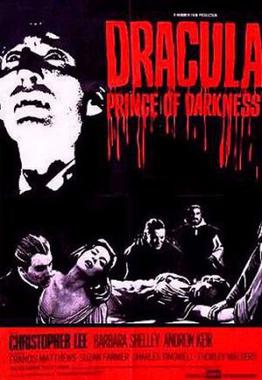
Dracula: Prince of Darkness is a 1966 British gothic supernatural horror film directed by Terence Fisher. The film was produced by Hammer Film Productions, and is the third entry in Hammer's Dracula series, as well as the second to feature Christopher Lee as Count Dracula, the titular vampire. It also stars Andrew Keir, Francis Matthews, and Barbara Shelley.
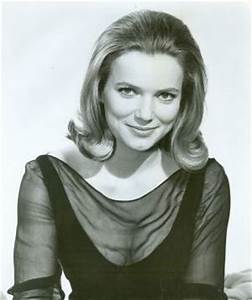
Suzan Maxine Farmer was an English film and television actress. She was regularly cast in movies produced by Hammer Films.
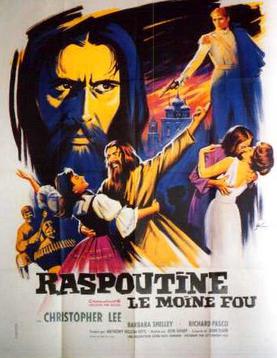
Rasputin the Mad Monk is a 1966 Hammer horror film directed by Don Sharp and starring Christopher Lee as Grigori Rasputin, the Russian peasant-mystic who gained great influence with the Tsars prior to the Russian Revolution. It also features Barbara Shelley, Francis Matthews, Suzan Farmer, Richard Pasco, Dinsdale Landen and Renée Asherson. The story is largely fictionalized, although some of the events leading up to Rasputin's assassination are very loosely based on Prince Yusupov's account of the story. For legal reasons, the character of Yusupov was replaced by Ivan (Matthews).
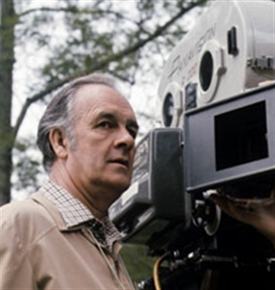
Donald Herman Sharp was an Australian film director.

Bray Film Studios is a British film and television facility in Water Oakley near Bray, Berkshire. It is best known for its association with Hammer Film Productions.

To the Devil a Daughter, sometimes stylized as To the Devil... a Daughter, is a 1976 horror film directed by Peter Sykes and starring Richard Widmark, Christopher Lee, Honor Blackman, Nastassja Kinski, and Denholm Elliott. Based on the 1953 novel of the same name by Dennis Wheatley, it follows an American occult researcher in England who attempts to save a young girl preyed upon by a Satanic cult led by a fallen Catholic priest.
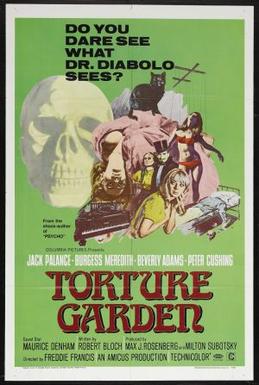
Torture Garden is a 1967 British anthology horror film directed by Freddie Francis and starring Burgess Meredith, Jack Palance, Michael Ripper, Beverly Adams, Peter Cushing, Maurice Denham, Ursula Howells, Michael Bryant and Barbara Ewing. The score was a collaboration between Hammer horror regulars James Bernard and Don Banks.
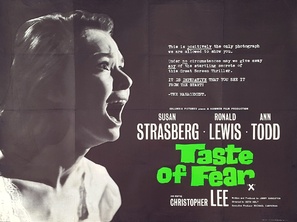
Taste of Fear is a 1961 British thriller film directed by Seth Holt. The film stars Susan Strasberg, Ronald Lewis, Ann Todd, and Christopher Lee in a supporting role. It was released in the United States as Scream of Fear.

Craze is a 1974 horror film directed by Freddie Francis. It stars Jack Palance as a psychotic antiques dealer who sacrifices women to the statue of Chuku, an African idol. Francis said it was "not that good."

The Pirates of Blood River is a 1962 British adventure film directed by John Gilling and starring Kerwin Mathews, Glenn Corbett, Christopher Lee and Oliver Reed.

Dark Places is a 1973 British psychological horror film directed by Don Sharp and starring Robert Hardy, Christopher Lee, Joan Collins and Herbert Lom.
Frankenstein is a British horror-adventure film series produced by Hammer Film Productions. The films, loosely based on the 1818 novel Frankenstein; or, The Modern Prometheus by Mary Shelley, are centered on Baron Victor Frankenstein, who experiments in creating a creature beyond human. The series is part of the larger Hammer horror oeuvre.
The World of Hammer is a British television documentary series created and written by Robert Sidaway and Ashley Sidaway, and produced by Robert Sidaway.
